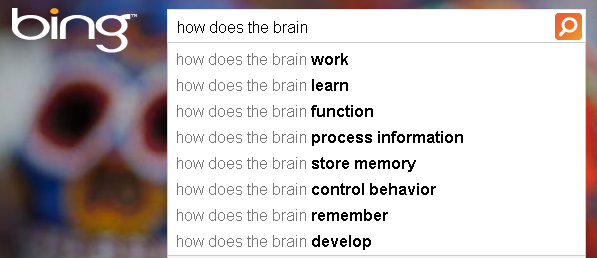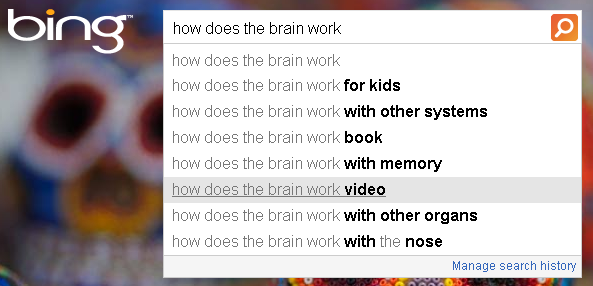Aim to Please with KBO, not SEO

 Any Web businesses can dramatically, positively and immediately expand their customer-service capabilities through live-chat features on their websites, as well as 800-number telephone support and even priority email. These are the most common executions of the online support offerings, but there are many, many others.
Any Web businesses can dramatically, positively and immediately expand their customer-service capabilities through live-chat features on their websites, as well as 800-number telephone support and even priority email. These are the most common executions of the online support offerings, but there are many, many others.
Yesterday's Website Magazine open-thread /subscribe/" poll on the type of support channels being offered to website visitors revealed that the options are indeed many - from tutorials and glossaries, to FAQ sections and full-on knowledge-base software solutions. The problem is that while most respondents use some of the options, few used all of them (likely for good reason, as the cost to implement and manage multiple options can be high).
The aim of providing support at all is to help users shorten the path to the answers they seek. The result of knowledgeable and effective user-support mechanisms is a better experience and ultimately a greater number of conversions - and higher-value conversions, at that. To extract every single bit of value from customer-support teams, it needs to be proactive instead of reactive.
Knowledge-base Optimization (KBO, not SEO)
While live chat, 800 numbers, email/forms are obviously in use by a majority of sites, providing a knowledge base may be the most viable/effective way and is something that should be explored by every business on the Web. The result will not only be happier customers but happier search engines as well.
What is a knowledge base? That may be the entire problem. There are software solutions available that help Web workers manage the customer-facing knowledge they want to share, but it is in effect nothing more than a strategy - one that requires a destination (be it weblog or forum) and a commitment.
Website Magazine has previously written on the topic of using questions (and answers, of course) as a foundation for content development in SEO, and that is essentially what we're doing (or should be doing) now. But much has changed in the digital marketing landscape since then. There are more powerful technologies to support both marketing and customer-support objectives, richer data to leverage and a far more complicated and competitive search engine landscape.
What digital Web workers should engage in is a process of public-facing, proactive knowledge-base optimization. Let's call it KBO - catchy, right?
The objective here is not to game the search engines through what we know about our users' search queries, but rather optimize and distribute an enterprise's total knowledge and experience directly to those entities that matter - users - wherever they are and however they seek those answers.
Research Available Knowledge
Knowledge-base optimization should start with research and research alone. Fortunately, there are many sources of data with which you can build out your knowledge base.
There are quite a few question-and-answer sites on the Web today, for example, including Ask.com and my personal favorite, Quora, as well as answers.com, answerbag.com, JustAnswer and even ChaCha.com. Someone building out a knowledge base should explore these destinations to identify the most common information (or misinformation) surrounding topics and industries related to their products/services.
Q&A sites are but one of the ways you can research the available knowledge, of course. Turning to your own analytics account is also quite useful. Identifying the queries that users conduct in question form will help you to optimize your knowledge base for exactly what they seek. Start by searching through the previous month's search query data for question-based phrases which, in many cases, are represented by the terms, "how", "where", "when", and, of course, "why".
Another of my favorite research tactics for the purpose of KBO is to leverage the auto-suggestion tools at Google and Bing to see all of the many variations of queries that users "may" ask. Using this as one part of the foundation of knowledge-base optimization should give you a good, if not great, start.
For example, let's say I am the foremost expert on the human brain and I am on the Web selling an ebook about how the brain works. Using the auto-suggestion tool at Bing, for example, gives me quite a few ideas for a public-facing knowledge base and how I may want to optimize for future queries. 
Develop Content Variations
Once you know what users are interested in and what they are actively searching for, then and only then can or should you start developing content in the way that users will consume it.
With 7 billion people in the world, you should expect that Web users' content consumption habits differ widely - by age, gender, wealth and geography, for example. It is the responsibility of content marketers to turn the questions into answers and provide it in a way that can be easily consumed.
If your audience is of a younger, more mobile demographic, for instance, perhaps answering questions in your knowledge base in the form of a video tutorial is appropriate (see image below). Those with a "trending older" audience might be drawn more to short form, question-and-answer-based content. The takeaway here, however, is not to develop knowledge-driven content for how one particular audience will consume it, but for all audiences that may consume it, for that is the only way to use KBO as a means to attract a broader audience and ultimately influence the number of conversions you ultimately receive.

Fortunately, your options for content forms are many. Take the information you develop and turn it into an email autoresponder feature, develop entertaining short-form videos, write long-form articles, develop infographics - and remember that the goal is to provide your users with the information they need in the format they want when they want it.
Distribution of Knowledge
Now that you know what type of information users are after, and some ways to develop content based on their consumption habits, it would be a travesty to leave it in within a silo (behind a registration wall, for example).
Distribution of knowledge is almost as important as knowledge development. To make sure that the content/knowledge you want to share can be consumed, turn first to those destinations where your users spend their time requesting information and sharing information - and their feedback - about your product. For example, if your email inbox is full with customer inquiries, make sure that there is a link to your knowledge base and that it is visible. Modify your voicemail/auto-attendant to direct users to that knowledge base. If you have a forum, use your knowledge base as a way to answer questions by directing users toward it. Finally, social media destinations like Facebook and Twitter provide a strong channel to distribute the information within your knowledge base.
The thing to keep in mind about knowledge-base optimization is that if you build it they (search engines and users) will come. It is the responsibility of all Web workers to not just optimize for search engines but optimize for users - and their needs. By adopting KBO, not SEO, you'll be on the fast track to providing a better experience for users and a more profitable one for your business.









